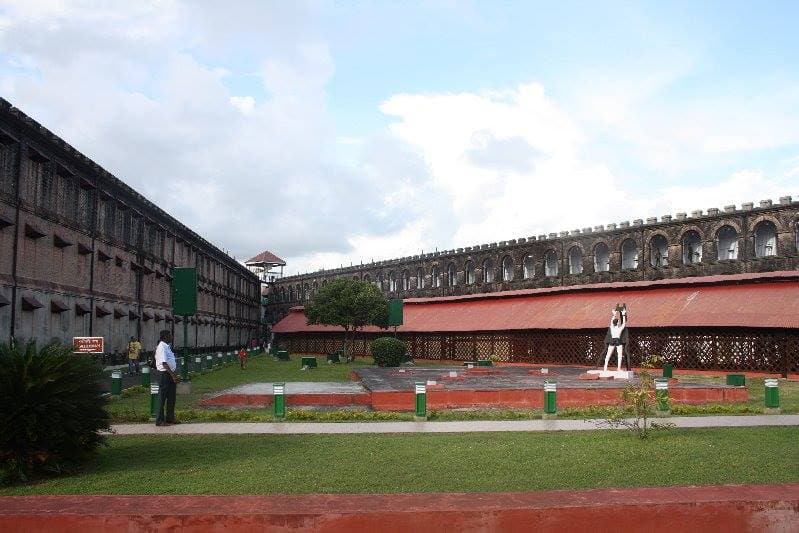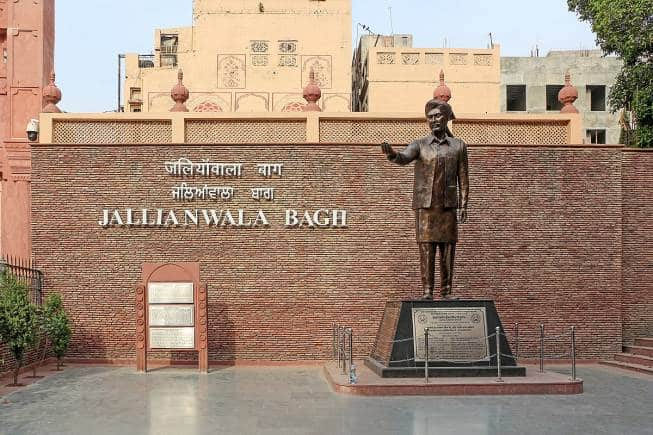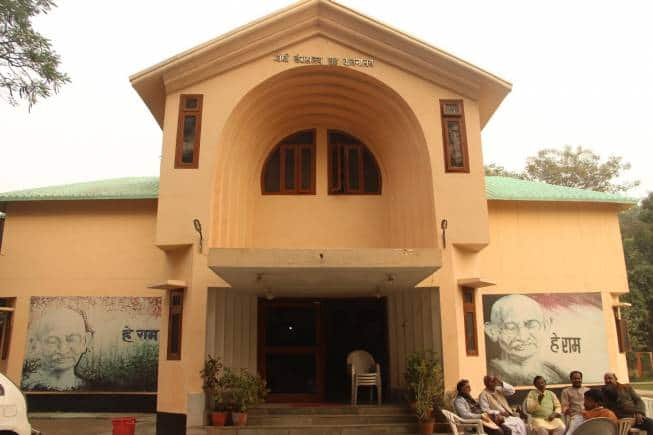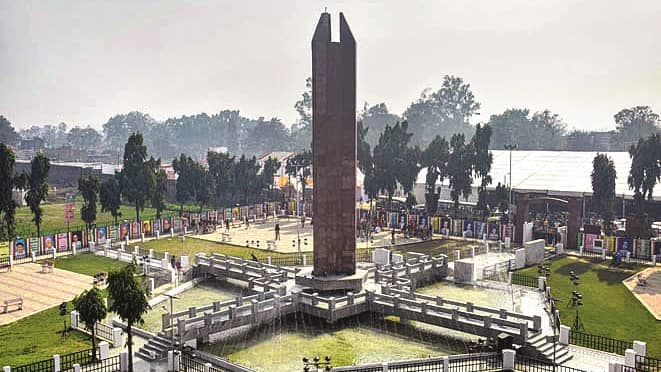



India’s Independence struggle was a battle won on many fronts, with Satyagrahas across the nation on disparate issues culminating into one united quest for freedom. So much so that today’s India bears many relics of this freedom struggle, scattered across cities and states.
 Come 2047, 2100, and ever after, these places and all monuments of historical import need to be preserved as our tangible heritage and documents of lived history, of events marked with the sweat and blood of our forefathers, that led to the making of a free country. No future can be built without the lessons of the past. Here are seven significant, pivotal places across the country that marked the turning points in India's freedom struggle. A visit is a must:
Come 2047, 2100, and ever after, these places and all monuments of historical import need to be preserved as our tangible heritage and documents of lived history, of events marked with the sweat and blood of our forefathers, that led to the making of a free country. No future can be built without the lessons of the past. Here are seven significant, pivotal places across the country that marked the turning points in India's freedom struggle. A visit is a must:
Andaman (Cellular Jail/Kalapani)
 Cellular Jail, Port Blair, Andaman. (Photo: Wikimedia Commons)
Cellular Jail, Port Blair, Andaman. (Photo: Wikimedia Commons)
Located at the far end of the Bay of Bengal, the Andaman and Nicobar Islands lie quite a distance away from India’s Eastern coast. This was part of the reason why the British chose Port Blair as the location for Cellular Jail, one of the most horrifying places of detention for freedom fighters. Endless rows of individual and bleak cells in a seven-pronged building catered to solitary confinement while untold torture was meted out to inmates. On the grounds are various other exhibits and an evocative jail museum.
How to reach: Flights from Chennai and Kolkata are the best options
What to do: Sound and light show, visit Viper Island where prisoners were sent to the gallows, beaches and island hopping
What to eat: Seafood in the unique local style
Jallianwala Bagh
Possibly one of the most iconic locations of India’s freedom struggle, Jallianwala Bagh in Punjab’s Amritsar was the site of a brutal massacre in 1919. People who had gathered peacefully in the open ground to protest the newly introduced Rowlatt Act were shot at on orders of Brigadier General Dyer. It was one of the bloodiest incidents and had far-reaching consequences. The aftermath witnessed widespread anger and laid the foundation stone for the start of the Non-Cooperation Movement in 1920. The garden stands as a testament to the brutality faced by the people of India at the hands of the British, a moving memorial dedicated to the innocent lives lost in that fateful incident.
 Jallianwala Bagh, Amritsar. (Photo: Wikimedia Commons)
Jallianwala Bagh, Amritsar. (Photo: Wikimedia Commons)
How to reach: Amritsar is well connected by flights, rail and road
What to do: Amar Jyoti, Martyr’s Gallery and Museum, Martyr’s Well, sound and light show
What to eat: Langar ka prasad, Amritsari kulcha, makki roti-sarson da saag, butter chicken, tandoori chicken
Dandi
 Dandi, Surat
Dandi, Surat
A village in Gujarat’s Navsari district, Dandi assumed prominence in 1930 for being the site where Mahatma Gandhi defied British authority to break the infamous salt law. An essential commodity in any household, the salt tax introduced by the British as one of the various instruments of colonial control had direct repercussions for all sections of Indian society. Transformed by Mahatma Gandhi into a symbol of non-violent resistance, the Dandi or Salt March began in the Sabarmati Ashram in 1930 and amassed support from a huge section of Indians, ending with Gandhiji producing salt on the banks of Dandi.
How to reach: Nearest airport is at Surat; take a train, bus or taxi to Dandi
What to do: Get a guided tour at the National Salt Satyagraha Memorial, visit Dandi beach
What to eat: Try local delicacies such as Surti sev, khaman dhokla, undhiyu and sweets such as ghari
Champaran
 Gandhi Sangrahalaya, Motihari, East Champaran
Gandhi Sangrahalaya, Motihari, East Champaran
This place turned Mohandas into Mahatma. Located in Bihar, Champaran’s fame comes from the 1917 Satyagraha led by Mahatma Gandhi against the British practice of pressuring farmers to grow Indigo, and sold at a very low price. Champaran assumes importance from the fact that it was among Gandhiji’s earliest non-violent movements against the British. Apart from highlights of the freedom struggle, such as visiting the Gandhi Sangrahalaya in Motihari to viewing the memorial pillar commemorating the Champaran Satyagraha, there are other things do here such as the Buddhist Stupa in Kesaria.
How to reach: Take a flight to Patna and reach Champaran by train or road
What to do: Gandhi Sangrahalaya, Kesaria Buddha Stupa, Gandhi Memorial
What to eat: Local dishes such as litti-chokha, laung-latika and khajuria
Kakori
 Kakori Shaheed Smarak
Kakori Shaheed Smarak
Close to Lucknow in Uttar Pradesh, Kakori served as a hub of literature and mystics in the past, possessing a vibrant culture centred around Urdu and the Kalandar Sufi order. It is also among the most dramatic places in India’s freedom struggle. In 1925, Indian Independence revolutionaries robbed a train passing through the village to fund weapons for the freedom struggle. Organised by the Hindustan Republican Association, the incident came to be known as the Kakori Train Robbery or the Kakori Conspiracy.
How to reach: Lucknow is well-connected by flights and trains, from where Kakori is just 14 km
What to do: Kakori Shaheed Smarak; head to Lucknow for a plethora of heritage monuments
What to eat: Kakori kebabs, galouti kebabs, biryani, sheermal, thandai
Jhansi
 Jhansi Fort
Jhansi Fort
The very name of the town, located in Uttar Pradesh, evokes notions of valour and bravery. The queen consort of Jhansi, Rani Lakshmi Bai, led a valiant resistance against British rule in 1857. The Doctrine of Lapse, an instrument of colonial annexation that ‘lapsed’ the control of Indian princely states to British control in the absence of a direct male heir was introduced in Jhansi and opposed fiercely by the queen. Her valour and sheer grit in defending the Kingdom secured her name among the freedom revolutionaries of the nation.
How to reach: Jhansi is well connected by rail and road; Gwalior, about 100 km away, is the nearest airport.
What to do: Visit Jhansi Fort, Rani Mahal, Rani Jhansi Museum, and the Cenotaph of Raja Gangadhar Rao.
What to eat: Chaat, poha , jalebi, kebabs and biryani
Chauri Chaura
 Chauri Chaura Shaheed Smarak
Chauri Chaura Shaheed Smarak
Uttar Pradesh’s Gorakhpur district is known for the eponymous Chauri Chaura incident that led to the Non-Cooperation Movement being called off. In 1922, the police in Chauri Chaura fired upon a gathering of the Non-Cooperation Movement, who retaliated by setting fire to a police station. The deaths arising from the fire spurred Mahatma Gandhi to call off the movement.
How to reach: Nearest airport is at Gorakhpur, but it is better to travel by Chauri Chaura by train or road
What to do: Visit the Shaheed Smarak
What to eat: Galouti kebabs, raj kachori, chhole-samosa
Discover the latest Business News, Sensex, and Nifty updates. Obtain Personal Finance insights, tax queries, and expert opinions on Moneycontrol or download the Moneycontrol App to stay updated!
Find the best of Al News in one place, specially curated for you every weekend.
Stay on top of the latest tech trends and biggest startup news.